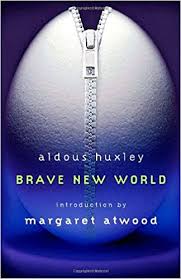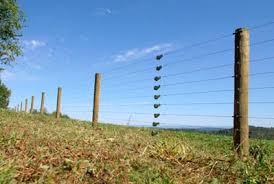
The novel I’ll be discussing today is one called Brave New World. In this blog I’ll be analyzing my novel from a archetypal criticism perspective & uncovering different relations to this novel. I will be analyzing this novel using archetypal literary criticism.
Hey… You know what other person you remind me of?
After reading the first bit of this book, I started to realize that John the Savage seemed like an outsider. Usually, when you think of someone who is an outsider, they are seen as different from others. An outsider does not really fit in. While there are multiple outsiders in the story, John is the one who stands out most to me. This is probably because he is not just an outsider on the Indian Reservation, but in the New World as well. In the New World, he is seen as an outsider because he lives as someone from the Indian Reservation, and he does not abide by the standards of the New World. He is seen as a ‘savage’ from the Reservation. Despite not fitting in, he does not want to change. John wants to live the way he has always lived, not conforming to the ideal way of life in the New World. Meanwhile, on the Indian Reservation, he does not fit in because his mother, a woman from the New World, gave birth to him. Unfortunately, when you are different from other people, you end up being an outsider. You are not accepted, even when your circumstances are not your fault. It seems like wherever you go or however hard you look for somewhere new, you are always the outsider. Sadly, that is how things are in today’s society too. Have you ever felt like no matter where you were, that you didn’t fit in? I think many of us can empathize with John. “You got rid of them. Yes, that’s just like you. Getting rid of everything unpleasant instead of learning to put up with it.”(Huxley 10) showing how John is in this society but is unhappy seeing people’s actions and how they portray themselves.

Real World Connection
John, the outsider, makes me think of the movie The Perks of Being a Wallflower. In this movie, the main character named Charlie is an outsider, or as they call him, a wallflower. He does not have a relationship with many people around him, but instead prefers to stand off to the side and observe daily life. In this movie, Charlie meets friends who accept him, and he sheds his outsider archetype. This suggests to me that the typical saying that “things will get better” holds true. This gives me hope that perhaps things will turn around in Brave New World for John. Perhaps John turns out to be a hero, just as Charlie does. I think that the use of the outsider/outcast in literature can help to shed light on the different ways of being in this world. Perhaps we should understand that people hold different backgrounds, views and beliefs, and that they can be accepted. To me, the outsider archetype is powerful! It allows the character to stand up for what they believe in by not conforming to society’s expectations.

Symbols
The way that this author uses various archetypal symbols in the book makes it more intriguing. Who know that one thing could mean something completely different in the context of the story? Symbols are incredibly powerful! In Brave New World, there is an electric fence that surrounds the Reservation. This fence is meaningful, because it separates one society from another. As you all probably know, when you touch an electric fence, you get electrocuted. So, the goal of it is to keep the two societies away from each other. People are trapped in the reservation, and people are discouraged from leaving. This fence does not allow anyone to escape without being severely harmed – “there is no escape from a Savage Reservation” (Huxley 88). Therefore, it is a symbol of protection. The fence protects the civilized world from being infested with the savages.
 Another symbol that Huxley uses zippers. The idea of unzipping a zipper represents instant gratification. This theme is something often seen in today’s society with the rapidly growing dependence on technology. Everyone expects to get instant gratification. This is similar to the zipper in Brave New World, where people also expect this. Instead of taking the time to undo multiple buttons on clothing, a zipper saves time, giving people what they want, when they want it – instant gratification!
Another symbol that Huxley uses zippers. The idea of unzipping a zipper represents instant gratification. This theme is something often seen in today’s society with the rapidly growing dependence on technology. Everyone expects to get instant gratification. This is similar to the zipper in Brave New World, where people also expect this. Instead of taking the time to undo multiple buttons on clothing, a zipper saves time, giving people what they want, when they want it – instant gratification!
Finally, a symbol that is talked about throughout the book is the Soma tablet, a drug that the government gives citizens to diminish sadness and enhance their mood. By dispensing these drugs, the government has ultimate control over the residents. In fact, they are encouraged to take the soma… “Take a holiday from reality whenever you like” (Huxley 46). The soma reminds me of opioid pills that many take in the real world, where “dopamine triggers a surge of happiness” (Akpan et al. par. 20). The whole idea of drugging your society to have total control over them seems quite unethical to me, don’t you think? The government can control how the citizens see the world, and how they react and respond. This in itself is a violation of a person’s autonomy. Their control is completely taken away from them. Therefore, the tablet is a symbol of control for the government.
Overall, there are many archetypes and symbols found throughout Brave New World. Exploring them in the context of the story is fascinating, because you dive deeper into the book and learn many new things. Analyzing the book allows you to see beneath the surface, making for a better reader experience.
Works Cited
Akpan, N. and Julia Griffin. “How a brain gets hooked on opioids.” PBS Science. 9 October 2017. Web. Accessed 12 July 2018.
Huxley, Aldous. Brave New World. New York: Harper Brothers, 1932. Print.